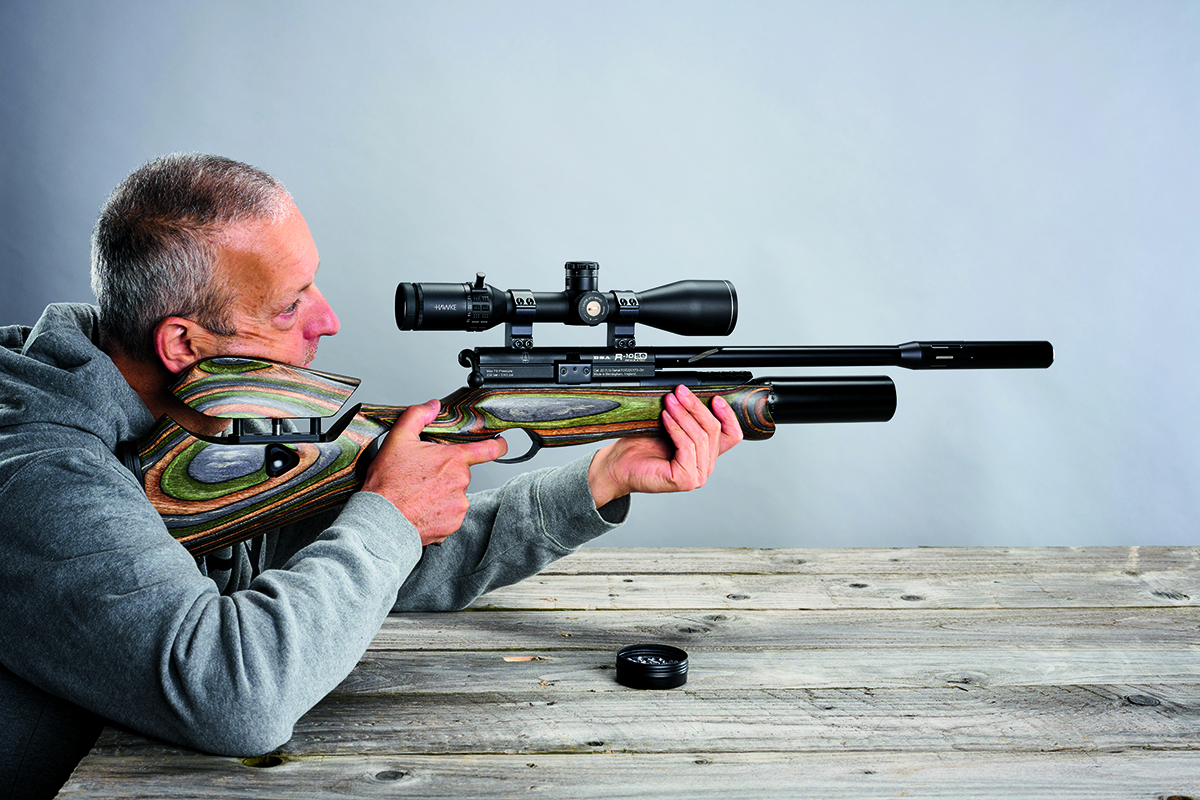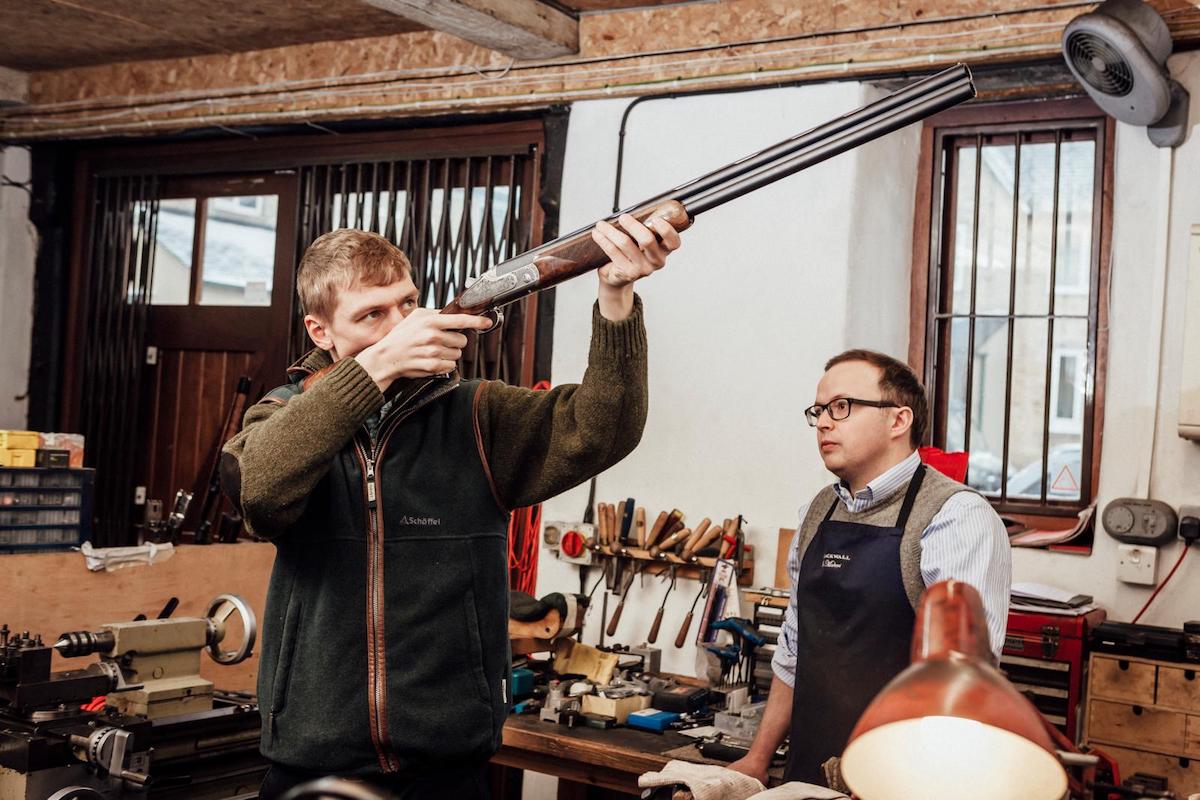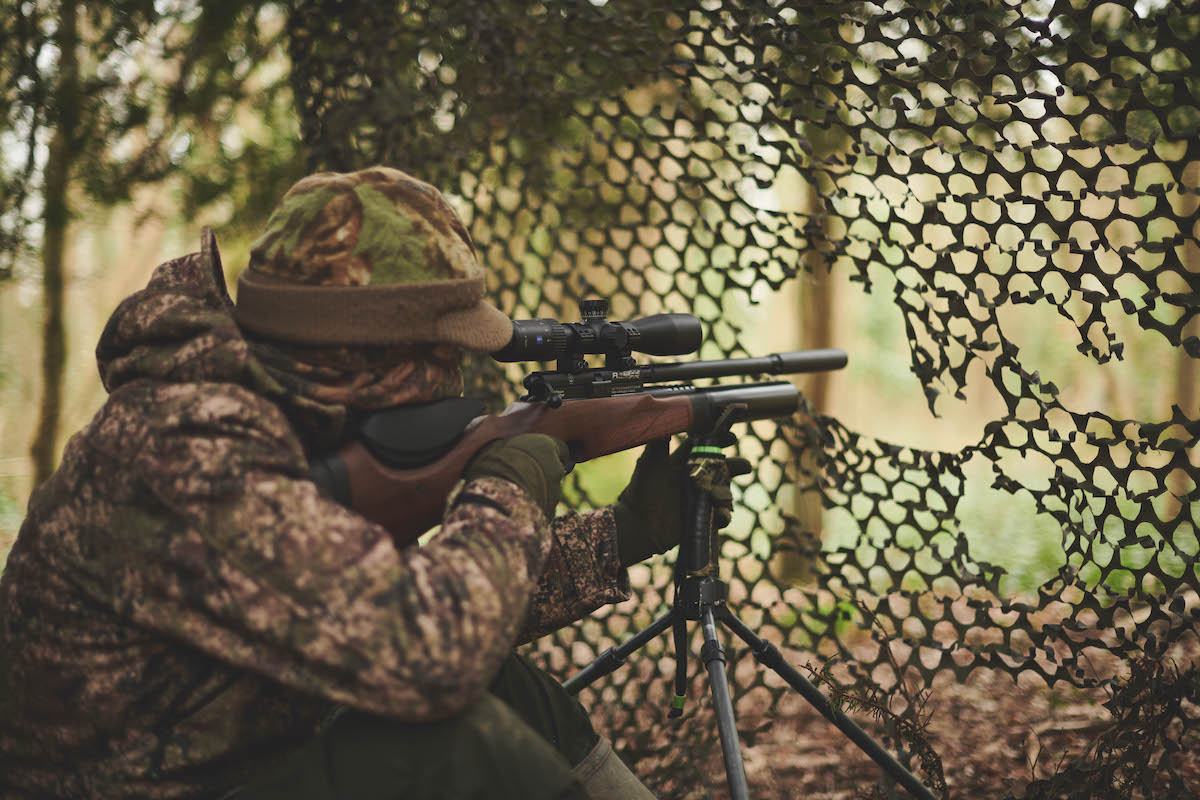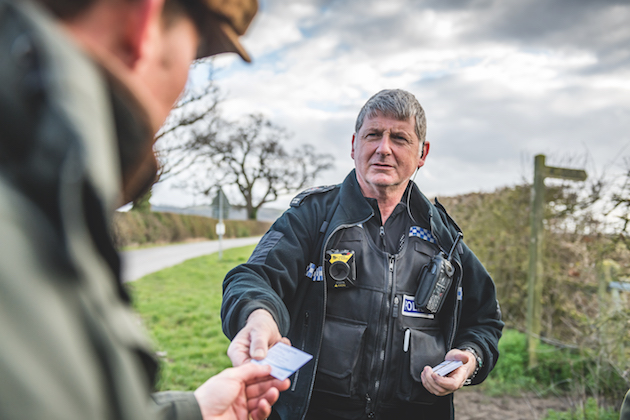Buying your first air rifle – 20 questions you should ask yourself before you do
Mike Morton reckons you should be asking at least 20 questions before opening your wallet and buying your first air rifle

It’s all too easy to head to the range, pop into your local gun shop or even flick through the pages of Airgun Shooter and let yourself be seduced by some of the rifles on show. But what works for one shooter doesn’t make it right for the next, and what looks good on paper may not turn out to fit you so well. So what is right for you when buying your first air rifle? If you’re an experienced shooter, you’ll know the answer.
But if you’re a relative newcomer to airguns then I believe there are a few things you should be aware of that need careful consideration before purchasing a new rifle.
I’ve come up with a list of 20 questions that should help. It’s not exhaustive by any means, but should at least be a good starting point.
I’m not trying to answer any of these for you, because shooting is all about doing the right thing for you alone.

“Whatever you choose will need to suit you and the style of shooting you enjoy”
Buying your first air rifle – 20 questions you should ask yourself before you do
1. Which powerplant?
One of the most fundamental decisions that needs to be made is what type of powerplant you need. Most air rifles generate the pressure needed to shoot a pellet using one of three methods, the best-known being the springer.
Spring-powered airguns use a mainspring and piston to generate power. They’re self-contained, they’re cheaper to buy and run because there’s no need to splash out on charging equipment. And having a constant source of power means the rifle is always ready for action.
Gas-rams work similarly to spring-powered guns, but instead of a coiled mainspring they feature a gas strut, like those used to take the weight of an open car boot or bonnet.
Gas-rams tend to take longer to wear out than springs, don’t need as much maintenance and can be left cocked for longer periods without losing any power.
PCPs, or pre-charged pneumatics, are powered by an onboard source of compressed air that is usually contained within a slim cylinder or a fatter type of air reservoir often referred to as a buddy bottle. Pulling the trigger releases a controlled blast of air, sending the pellet on its way.
PCPs are a lot easier to shoot than springers or gas-rams as there is little to no recoil, but you’ll also have to factor in the extra cost of the charging equipment that’s needed to put the compressed air into the rifle, which can typically range from a scuba-style charging cylinder to a bicycle-style stirrup pump and their respective filling hoses.
2. Which calibre?
Numerous calibre options are available to the modern airgun shooter, but newer shooters should probably consider just two – .177 and .22 – as there is a wide choice and availability of both rifles and ammunition in these calibres, something that’s rarely the case with more specialised options such as .20, .25 and .30.
In general, .177 pellets have a flatter trajectory, while .22 pellets have a more loopy trajectory, but will hit harder. The smaller pellets usually cost a bit less, while .22 may be less fiddly to load. Target shooters tend to favour .177, while hunters are a bit more divided. (Read here for more on which air rifle calibre you should pick and why).
3. How much can I afford?
It’s no good searching for an air rifle with an open heart, or even an open mind, unless you are able to open your wallet to match. Instead, be realistic about what you can afford, and factor in additional costs on top of the basic price of the rifle. At a minimum you’ll probably need mounts and a telescopic sight, as well as some sort of charging equipment if you want to go down the PCP route.
If it’s your very first air rifle you may consider going second-hand or buying a less expensive model than your “dream” gun. This will help you cut your teeth on it, work out what you really need and whether the type of rifle you’ve bought is right for you.
Buying a more expensive rifle from the outset is certainly viable if you have the money, but if you then decide you’ve bought the wrong one, you’re unlikely to get back more than 60% of its retail cost when you try to move it on. (Read more here for our picks for the best budget pellets and the best budget PCP air rifles).
4. Are my choices available?
Unless you are deliberately looking for an older airgun, perhaps for reasons of nostalgia, think about which models are currently available, who sells them and how far away they are based.
Create a shortlist of purchases then phone ahead to see if they are in stock before heading out to the gun shop. If you just turn up on spec it may be tempting to let yourself be swayed by a completely different rifle that just happens to be sitting on the shelf, but may not be right for you. Plan ahead!
Also be aware that you may need to visit several shops to see all the options on your shortlist, depending on which makes and models each retailer carries. This may involve a lot of travel, but does mean you will be making your final selection based on your own first-hand experience with all the guns on your list. One way to see a lot of different rifles under one roof is to visit a shooting show.
5. Can I get it serviced?
Air rifles need relatively little work to keep functioning properly, but in addition to regular maintenance they will need a proper service from time to time.
You can get a rude reminder that you need to service your airgun with a loss of air in the case of a PCP, or excess recoil and erratic accuracy in the case of a springer.
If you decide to buy an exotic air rifle from a retailer 200 miles away, be aware that you may have to make that 200-mile trip again for a service. If that’s the case, you may well still think it’s worth it, but it’s definitely something to bear in mind.
6. How long should my rifle be?
A longer barrel is more air-efficient, which is why so many super high-power FAC air rifles are equipped with impressively long barrels, but for a general sub-12 foot pound airgun, the rifle’s overall length rather than its barrel length is probably the more important dimension.
Will you be plinking with the rifle in your garden, or will you be hunting with it from a hide? Will you be transporting it to a club, range or outdoor target event in the boot of your car, or will you be carrying it in a bag on public transport? You may like the heft and balance of a longer rifle, or prefer the much faster handling and potentially lower weight of a shorter gun. Your particular requirements will help you narrow down your choice between a full-length rifle, a carbine or a bullpup.
7. Does it fulfil its purpose?
There’s a simple question that needs to be asked that’s sometimes hard to answer: why do you want an air rifle? Some people, and that included me in my younger days, would simply answer “to shoot” thinking that was enough of an answer to justify purchasing an air rifle. But to shoot what?
Air rifles have always been produced for some often quite specific tasks, be that informal plinking, target shooting or hunting. Nowadays these categories are even further refined. Take target shooting, for example. There’s a big difference between the type of gun you’d need for 10 Metre Precision, bell target, benchrest or HFT.
Do think ahead about when, where and how you want to enjoy your airgun. Some air rifles are full-on specialists, while others are jacks of all trades, and that could make them more useful to you depending on the type of shooting you intend to do.
8. Is the butt pad adjustable?

The butt pad on this custom laminate handle from Form Rifle Stocks is made by US firm LimbSaver and is made of an extremely soft material
With some general questions answered, it’s time to look at some specific features, starting with the butt pad.
Butt pads were introduced on shotguns and powder-burning rifles as an improvement on the simple butt plate, adding a degree of protection for the shoulder against recoil, while also adding grip.
The butt pads on air rifles fulfil a similar role, although recoil-absorption is more important on a springer or gas-ram that does recoil, rather than a PCP that doesn’t.
Some butt pads go one step further by offering adjustability, usually up or down, which will lower or raise the height of the butt in the shoulder respectively, but sometimes angled to the side, moving the butt closer to or further away from the shooter’s body.
You will only really know whether you need these features if you not only shoulder the rifle in person, but shoulder it with the scope and mounts you intend to use. In many cases a non-adjustable butt pad is perfectly acceptable, while in others it’s essential in order to achieve decent gun fit.
9. Is the cheekpiece high enough?
Early air rifles were fitted with open sights, which naturally sat quite low on the rifle, and the butt and cheekpiece were designed to offer the shooter a correspondingly low sight picture.
Even when telescopic sights became more affordable, more available and therefore more popular a few decades ago, manufacturers continued to offer stocks with open sights in mind, meaning the shooter’s head usually sat too low for optimal scope use.
Modern air rifle stocks have luckily taken into account the fact that the vast majority of shooters will be using a scope, and so the cheekpiece is higher. Some cheekpieces can be raised higher still, making it easier to adopt the perfect head position.
But like the butt pad mentioned above, you will only really know if you need an adjustable cheekpiece if you shoulder your prospective rifle with a scope on top and see where your eyeline falls in relation to the centreline of the scope, something that’s not always easy to do in the shop.
10. What type of stock?
Early air rifle stocks tended to mimic shotguns and military bolt-action rifles where getting quickly into the aim was a priority. Such stocks typically had a very shallow wrist – the area gripped by the shooting hand – which can prove uncomfortable for some people.
Most modern sporter stocks have a pistol grip type of shape built into them, offering a steeper angle and more comfortable hold. Another stock style is the thumbhole stock, where the shooting hand wraps round a grip that’s incorporated into a cut-out in the stock. Stocks of both types may let the shooter adopt a thumb-up hold, which they may find even more comfortable.
Stocks may be left-handed, right-handed or ambidextrous. If your chosen rifle is not available with the type of stock you need, you may have to go down the custom stock route, which will add to the cost, but will make the rifle easier to hold and shoot well.


(Top) One element that can make or break the usefulness of a stock is whether or not the height of the cheekpiece can be adjusted (Above) This particular stock is a dedicated right-hander, and includes a scalloped thumb shelf for people who like to shoot thumb-up
11. Bolt or sidelever?
If you are looking to buy a PCP, you’ll have to choose between a type of action that’s activated by a turnbolt or a sidelever. In fact there’s even a third option in the shape of the straight-pull, but these are few and far between.
Should your rifle choice be dictated by whether it has a bolt or sidelever? Possibly. Sidelevers are usually quicker, slicker and require less physical effort, but may be more expensive. A bolt-action rifle, on the other hand, offers a more traditional and tactile experience, which some shooters love. It’s really a matter of personal taste.

This BSA R-10 SE is a regulated, bolt-action, multi-shot PCP in .22 calibre – all features that can vary wildly from one rifle to another
12. Where’s the safety catch?
This probably won’t be a deal-breaker, but the location of the safety catch, the way it’s applied and disengaged, the status the rifle needs to be in before it can be applied and even how quiet it is in operation can all take on greater or lesser degrees of importance depending on your requirements.
13. Do I need a multishot?
As a very general rule of thumb, a single-shot rifle is not only adequate for most target disciplines, but can even be advantageous, potentially offering enhanced accuracy over a multishot due to the way the pellet is presented to the breech.
Some target disciplines go one step further, either insisting that a single-shot rifle is used, or at the least that the magazine is removed after each shot.
Hunters, plinkers and shooters of fast-fire disciplines, on the other hand, will usually favour a magazine-fed rifle. While the vast majority of multi-shots are PCPs, springer and gas-ram multis are also available.
If you go down the multishot route, find out whether the magazine system is reliable, what shot capacity it offers in your calibre, whether it has to be inserted into the breech from one side or the other, and whether it sits higher than the scope rail, potentially limiting scope choice or placement.

While most shooters won’t buy a particular rifle on the strength of its safety, the R-10’s scores points because it can be applied any time
14. What type of air supply?
If you are looking for a PCP, decide whether an increased shot count, a slight increase in bulk or particular aesthetics of the rifle are more of a concern to you.
In general, a buddy bottle will offer more shots per fill than a rifle that’s fitted with an inline cylinder. Some shooters will really appreciate having the option to sometimes shoot hundreds of pellets before having to refill their rifle with compressed air.
Others will prefer an inline cylinder, either because they don’t need or intend to take as many shots between refills, or simply prefer the look of a rifle fitted with an inline cylinder.
15. Is the barrel free-floating?
Some PCP barrels will be supported at the breech end only, and a barrel like this is said to be free-floating as it has no additional support. The alternative is to have a contact point with the barrel towards the muzzle, typically a barrel band.
Should it matter to you whether the rifles on your potential purchase list have free-floating barrels or not? Maybe.
A free-floating barrel can be more accurate because when a projectile travels down its length the barrel will vibrate. That vibration will take place more consistently and at the natural frequency if the barrel is free-floated.
Barrel bands, on the other hand, should therefore hamper a rifle’s accuracy. And yet they are quite common and are seen on some very accurate air rifles, so for whatever reason their presence does not seem as detrimental as might be expected.

This barrel is said to be free-floating as its only attachment point is at the action block, with no extra support elsewhere, such as a barrel band
16. Is it accurate?
It’s certainly a good idea to do some research about your prospective new rifle based on the findings of others, but it’s worth bearing two factors in mind. The first of these is to define what level of accuracy you are looking for. You’ll often see people refer to rifles as “tackdrivers” that are capable of “one-hole” accuracy or putting “pellet on pellet”.
But are they really? I’ve met plenty of shooters who’ve described their rifle’s level of accuracy like this, only to find their definition to be very different to mine having seen first-hand what they actually shoot like.
Secondly, some rifles will deliver excellent accuracy with many different types of pellet, while others will only shoot well with one. This is another factor that’s difficult to determine in advance of actually owning and testing the rifle. If you have the opportunity to shoot it before buying it, then take it.
(Read more here on how to improve your air rifle marksmanship).
17. Can you fit a moderator?
Even air rifles with a muzzle energy of less than 12 ft-lb can be loud, especially when they are being shot indoors, so hunters aren’t the only ones for whom a moderator and/or a shrouded barrel is important. Back garden plinkers need to keep on the right side of their neighbours, so a moderator can pay dividends when it comes to keeping the peace with the people who live on the other side of the hedge or fence. And although they won’t do as good a job as on a PCP, moderators can be fitted to some springers and gas-rams too.

Sound suppression may be an important consideration not just for hunters, but for those who plink in the garden or shoot indoors too
18. Can the trigger be adjusted?
Some triggers can be adjusted for first- and second-stage travel and weight. Some trigger blades can be adjusted for height, angle and for making minor adjustments to length of pull. First-time shooters may not have the experience to know what to look for here, but a trigger that’s set up well can really enhance the overall shooting experience.

The ability to adjust the position of the trigger blade so it naturally falls under the pad of the finger is a definite plus point for many shooters
19. Does it fit you?
If you’ve taken all the above into account and your shortlist has got correspondingly shorter as a result, it’s worth revisiting the contenders and shouldering them in a variety of shooting stances, but especially the ones you expect to be using the most, to see whether the rifle fits you as well as it should.
It should feel comfortable and natural. If you have to stretch or strain, or if there are niggles than can’t be resolved by adjustment, then that is not the right gun for you.
20. Do you like it?
If everything has come together properly, and that also includes the way it looks, then you should have built a mental bond with your rifle even before you’ve paid for it. If you don’t get that feeling, or still have lingering doubts, then walk away, at least for now, and come back to it fresh another day.
But if that rifle whispers sweet nothings to you when you shoulder it, the two of you are likely to spend many happy years together. What’s the next step? Go shooting!








